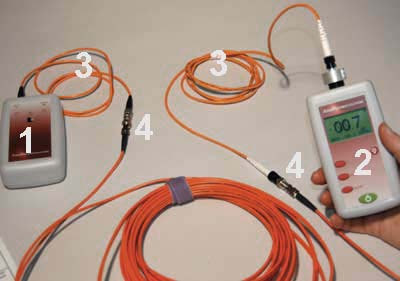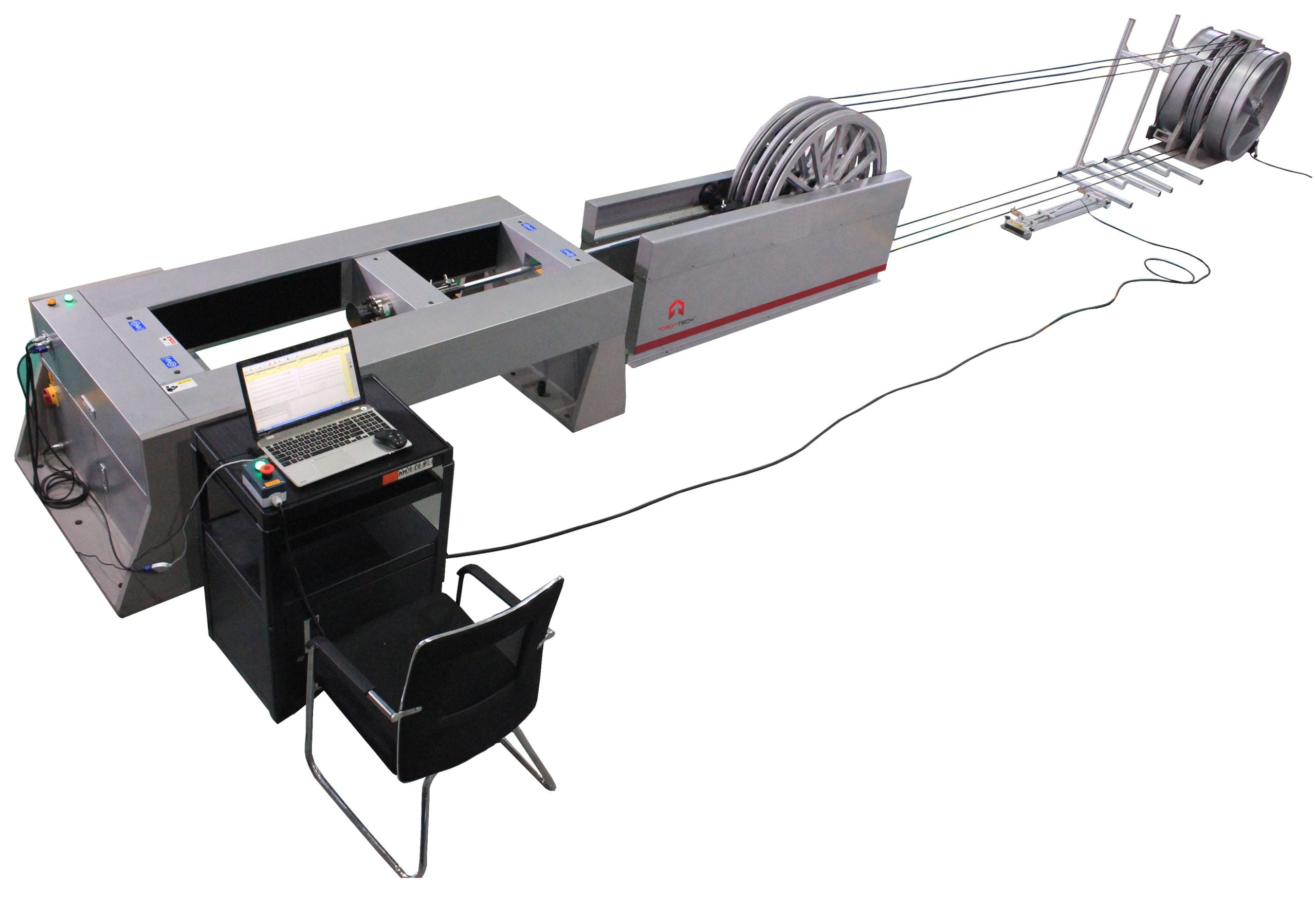Discover the Significance of Optical Fiber Testing in Modern Telecommunications
In the realm of modern-day telecoms, the significance of optical fibre testing can not be overemphasized, as it functions as the foundation for ensuring network dependability and efficiency. By applying normal screening methods, drivers can preemptively determine prospective problems such as signal destruction, therefore protecting versus interruptions that might verify pricey. Advanced strategies like Optical Time-Domain Reflectometry play a crucial duty in this procedure, yet several might overlook the more comprehensive effects of these techniques. What are the details advantages that normal screening deals, and just how might it shape the future landscape of telecoms?

Comprehending Optical Fibre Screening
Optical fibre testing is a crucial process in telecoms that guarantees the integrity and efficiency of fibre optic networks. This testing incorporates a series of procedures made to examine the physical and functional attributes of optical fibers - optical fibre testing equipment. Secret parameters analyzed include optical power loss, bandwidth ability, and fault place, which are vital for preserving top notch communication links
The screening process generally includes using specific equipment such as Optical Time-Domain Reflectometers (OTDR) and Optical Power Meters. OTDRs are employed to identify and characterize mistakes, splices, and ports within the fibre, while power meters measure the transmitted light signal strength to ascertain effectiveness.
Moreover, testing is conducted at various stages, consisting of throughout setup, upkeep, and troubleshooting, to make certain that the network meets industry criteria and operational demands. Conformity with standards established by companies like the International Telecommunication Union (ITU) and the Telecommunications Industry Organization (TIA) is extremely important.
Benefits of Routine Examining
Regular testing of optical fibres yields many benefits that considerably improve network integrity and efficiency. One of the primary benefits is the very early discovery of possible concerns, such as breaks or degradation in the fibre, which can cause pricey downtime if left unaddressed (robotic vision). By determining these issues proactively, telecoms service providers can reduce solution disturbances and ensure consistent connectivity for their clients
In addition, normal screening aids to keep the honesty of signal top quality. As optical fibers age, their efficiency can be impacted by aspects such as ecological conditions and physical tension. Routine evaluations allow for the monitoring of signal loss and overall transmission efficacy, guaranteeing that the network operates at optimum degrees.
An additional considerable advantage is conformity with market criteria. Routine testing sustains adherence to regulative needs, consequently minimizing legal and financial threats connected with non-compliance. In addition, it enhances the overall life-span of the fiber facilities by facilitating prompt upkeep and repair services.

Common Examining Techniques
Testing optical fibers employs different techniques to make certain the stability and performance of telecoms networks. Among the most common methods is Optical Time Domain Reflectometry (OTDR), which examines the whole length of the fiber by sending out a pulse of light and measuring the representations brought on by imperfections or breaks. This approach gives in-depth information regarding the location and extent of mistakes.
One more common method is making use of Optical Power Meters, which determine the amount of light transferred through the fiber. This method helps identify the loss of signal toughness, making certain that it meets industry standards. Additionally, Visual Fault Locators (VFL) are utilized to identify breaks or serious bends in the fiber by projecting a visible laser light into the cable.
Insertion loss screening is also essential, as it quantifies the loss of signal power resulting from links and interlaces within the network. The use of Polarization Mode Diffusion (PMD) screening assesses the effect of fiber attributes on signal integrity.
Each of these methods plays a crucial duty in maintaining the efficiency and reliability of optical fibre networks, eventually adding to smooth telecommunications procedures.
Influence On Network Efficiency
The honesty and performance of optical fibre networks directly affect overall network efficiency. In contemporary telecommunications, the efficiency of information transmission counts greatly on the top quality of the optical fibres utilized. Any type of degradation in the fiber's problem-- whether due to YOURURL.com physical damages, contamination, or extreme bending-- can result in enhanced depletion and signal loss, considerably impacting data integrity and speed.
Normal optical fibre screening is crucial to recognize and correct potential problems prior to they show up as network failures or stagnations. Methods such as Optical Time Domain Name Reflectometry (OTDR) and insertion loss screening enable service technicians to determine the efficiency of fibre web links properly. These examinations not just assess the physical problem of the fibres yet likewise ensure compliance with sector requirements, thus guarding the network's integrity.
Additionally, a properly maintained optical fiber network contributes to reduced operational costs and enhanced consumer satisfaction, as end-users experience less interruptions and higher information rates. Eventually, the emphasis on rigorous optical fibre testing practices functions as a cornerstone for sustaining robust telecoms infrastructure, guaranteeing that provider can fulfill the growing demands for bandwidth and connection in today's digital age.
Future Fads in Examining
As we look ahead, developments in technology are positioned to improve optical fiber testing in telecoms. The surge of automation and expert system (AI) is anticipated to boost the efficiency and accuracy of screening processes. Automated testing systems can conduct thorough analyses with marginal home human intervention, dramatically lowering the potential for mistakes and accelerating time-to-deployment.
In addition, the assimilation of artificial intelligence formulas will enable predictive upkeep, enabling network carriers to foresee potential concerns before they intensify right into failings. This positive approach not just enhances network reliability yet likewise optimizes functional expenses.
An additional arising trend is the advancement of portable testing tools that supply real-time evaluation - fibre testing equipment. These gadgets will empower service technicians to execute on-site diagnostics rapidly, helping with quicker resolutions and boosting solution high quality
The growth of 5G networks better demands the development of testing techniques. As data transfer demands boost, traditional testing techniques may no more are enough. Innovative options such as optical time-domain reflectometry (OTDR) and Continue advanced spooky analysis will certainly end up being important in ensuring the integrity and performance of high-speed connections.

Verdict
Finally, optical fiber screening is important for making sure the honesty and reliability of contemporary telecoms networks. Regular testing methods not just aid identify prospective problems such as signal loss and mistakes yet likewise add to boosted network performance and consumer contentment. As the need for seamless connectivity continues to grow, the adoption of sophisticated screening approaches will certainly play an important duty in keeping top quality network requirements and supporting the progressing landscape of telecoms.